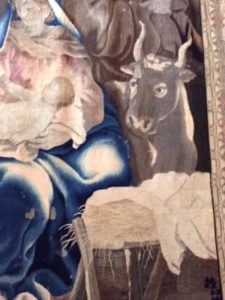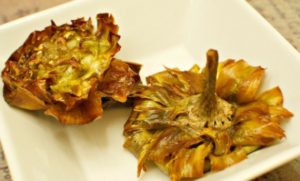In preparation for its annual Sacred Sites Open House Weekend http://www.nylandmarks.org/events/sacred_sites_open_house/2017_sacred_sites_open_house/, the New York Landmarks Conservancy, where I volunteer as a writer/researcher, held a kick-off event at Temple Emanu-El. We strolled around the gigantic sanctuary that can hold 2500 people with Art Feminella, who talked about his work as conservator for the stained glass windows of the Sanctuary and Beth El  Chapel. I’d interviewed Art by phone so it was nice to meet him in person. Later we went into Greenwald Hall, a chapel with wonderful landscape windows including two by the Tiffany Studios, for a talk by Peter A. Rohlf, CEO of Rohlf Stained and Leaded Glass Studio restored them.
Chapel. I’d interviewed Art by phone so it was nice to meet him in person. Later we went into Greenwald Hall, a chapel with wonderful landscape windows including two by the Tiffany Studios, for a talk by Peter A. Rohlf, CEO of Rohlf Stained and Leaded Glass Studio restored them.
Established in l845 at a gathering of 33 Jews from Germany, Temple Emanu-El held its first services in a second floor loft at the corner of Grand and Clinton streets on the Lower East Side. Then began the trek uptown; by 1868 the temple built at Fifth Avenue and East 43rd Street. In 1927 Emanu-El, which had consolidated with Temple Beth-El, built its present house of worship. In addition to everything else about this grand building, it has a nifty museum with permanent and changing exhibitions as well as an excellent library.
A few days later, it was up to St. John the Divine to see the newly re-installed Barberini tapestries. These were produced in Rome between 1644 and 1656, woven by handpicked weavers for Francesco Barberini, the nephew of Pope Urban VIII, in his own tapestry workshop and originally installed at the Vatican and Barberini palaces. Factoid: Barbarini, the nephew of Pope Urban VIII, was known as a cardinale nepoti; the Latin word nepos (nephew) became the coined word ‘nepotism.’ Family climbing aside, think of hanging these textiles in your palace, both to admire and to keep out some of the brutal
wind.
The artistry at both sites reminded me of how little I know about conservation which seems fascinating with its intersection of art, history and science. I bet the demand for skilled craftspeople in stained glass and textiles (as well as other fields) are huge as there is a shortage of highly trained workers.
This recipe for Carciofi alla Giudea (Jewish-style artichokes) requires a little work what with the hot oil but if you persist it’s worth it.
Carciofi alla Giudea (courtesy Williams Sonoma who have simplified the operation.)
Serves 4
4 artichokes (regular globe ones) If you want to hunt down the little ones, there’s a lot less cleaning as there are far fewer outer leaves. Buy about a pound or even more.
3 ½ cups olive oil
Salt and pepper
1 lemon
Remove the hard leaves from the artichoke. Cut stalk leaving about an inch and a half.
With a very sharp small knife, cut off all the leaves leaving the soft, underneath ones. Put each artichoke when trimmed into the water with juice of one lemon and repeat the operation for each artichoke. Start heating oil in a pan.
Drain artichokes, dry on paper towel and press them lengthwise on the table to open the leaves, again, one by one.
Season insides of artichokes with salt and pepper. Dip artichokes into the boiling oil with the stalk up and cook about 10 minutes; turn over and cook other side for about same time. Drain them on more paper towel. Serve hot or room temp.
If you use the big ones, it’s one per person. Small can be a great first course; if you make even more they could be the basis for lunch with bread, cheese and a salad.





Mari:
You rock. In Italy, when you want to describe the non plus ultra in foodie heaven, you say that you ate like a cardinal. The implication being that cardinals dined better than popes!
Carciofi alla Giudea are the bestest thing in the planet. The recipe looks scrumptious. Woof!
Thanks for a spot of temple lore and Roman spring.
Baci and bacelli.
Terrific to hear about your pilgrimage ‘sort of’ or not.
Glad you enjoyed it! I did, too.